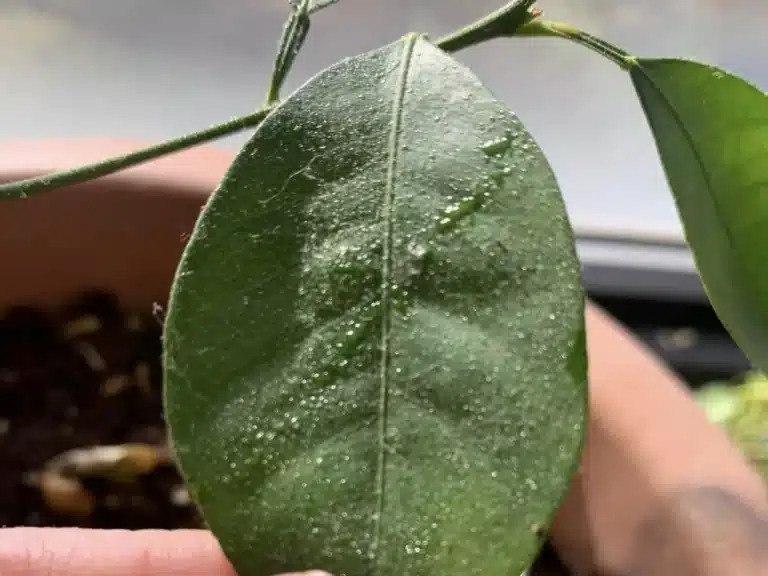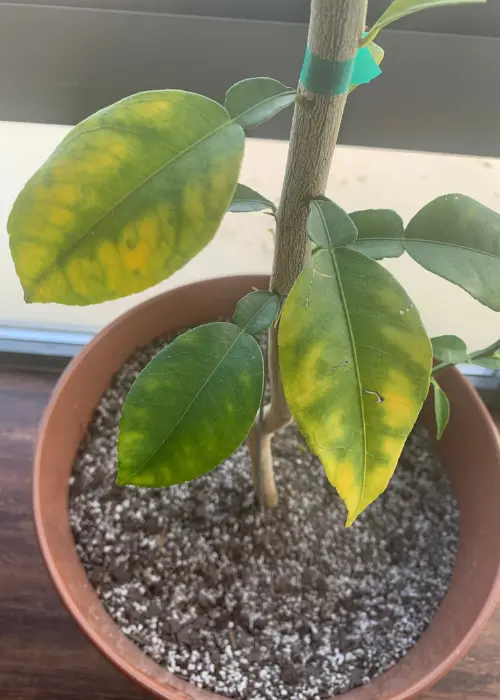How Much Water Do Lemon Trees Need (and How Often)?
Lemon trees are easy-to-care-for plants that can tolerate a wide range of conditions. They don’t consume much water and can be grown both indoors and outdoors. Your watering frequency will depend on the prevailing conditions, age of the tree, and soil type.
As a rule of thumb, lemon trees don’t like wet soil that can occur due to overwatering. Water the tree once or twice a week during the growing months. Allow the soil to try out between waterings for potted lemon trees to prevent root rot and other citrus diseases.
It’s vital to correctly care for your lemon tree by considering how much and when to water your plants. An effective watering schedule allows for progressive and optimal growth of your plant.
How much water do lemon trees need?
Lemon trees need water at least twice a week. The water quantity and frequency depend on factors such as soil type, tree size, age, season, and location. Young lemon trees require water about 2-3 times during the first week and about once after every seven days for the following two months.
You might also have to increase the frequency of your watering during the dry period, especially if you are growing your lemon trees outdoors. Water your lemon tree about once every seven days to keep your plant from drying out. Make sure the soil is dry between waterings to prevent instances of root rot and overwatering lemon trees.
If you are growing your lemon tree indoors, you might have to consider additional factors such as humidity and temperature. It is also necessary to use an ideal pot size for your plant and transplant it as your lemon tree increases in size.
How often to water lemon trees
You should water lemon trees at least once after every five days. Always remember to check the soil surface for indicators of whether your lemon tree might need watering. Dip your finger to a depth of about 2”-3” to check for moisture beneath the soil surface.
The presence of moisture could mean that your tree can last a few more days without water while a dry soil surface indicates that your tree could be thirsty and need watering. You also need to consider aspects such as the season, temperature, soil type, and other factors when determining your watering schedule. Potted lemon trees also have different water requirements compared to similar trees grown outdoors.
Signs of a thirsty lemon tree
Lemon trees are hardy species that don’t need much water to grow and maintain. However, continued neglect of the plants watering needs can create undesired consequences. You can tell if your lemon tree is thirsty by looking at the soil, roots, leaves, fruits, and other key sections of your plant.
Signs of a thirsty lemon tree include:
Inward curling leaves
A lemon tree with inward curling leaves is most likely suffering from underwatering (or another water-related issue). Affected leaves may wilt, change color and dry off if left unattended for considerable durations.
Underwatered leaves may also experience shape loss on young shoots, a dull coloring, and sickly appeal. Wilting can occur naturally on hot days as a temperature control measure; however, the same can also be an indicator that your lemon tree is thirsty and not receiving enough water.
Overwatering and underwatering are key reasons for inward curling leaves so it’s always best to monitor the water status of your tree to avoid excess or inadequate hydration issues in the long run.
Drooping blossoms
Thirsty lemon trees drop their blooms prematurely and hinder fruit development. The phenomenon is a physiological response to drought, adverse weather, and additional environmental issues that cause plant distress.
Lemon flowers often appear during spring, mature through summer, and develop to fruit during autumn and winter. Lemon blooms are highly susceptible to environmental and physiological changes. Having too little water can cause the blooms to drop off at an early stage of development due to the resulting physiological changes.
Other factors may also cause premature fruit and leaf drop in lemons so it’s always best to check for more indicators before making a definitive diagnosis.
Dry, cracked soil surface
Your soil surface can help you to determine if your lemon tree needs watering. Lemon trees prefer a moist, slightly acidic, and well-drained growing medium to remain healthy.
An underwatered surface appears dry, dusty, and has a brittle texture. You may also notice the soil begin to peel away from the growing container, especially when growing lemon trees under indoor conditions.
Underwatered soils are unsightly and undesirable. It’s always advisable to monitor your soil by regularly using a “stick/finger test” for your trees. A hard surface could mean that your soil is receiving inadequate water and a soft upper surface means that your soil has a moisture content.
It is not advisable to keep the soil wet as lemon trees can suffer from overwatering. Instead, use the correct soil types such as a sandy loam mixture, peat moss, mulch, and similar appropriate growing mediums. It’s also recommended to consider the soil’s pH as an excessively alkaline pH can inhibit nutrient absorption.
Undersized leaves and fruits
Thirsty lemon trees show signs of slow growth. Water plays a key role in xylem and phloem activity within the plant. Water issues affect the production of energy and other key aspects of plant development.
Affected plants may have exhibited reduced new shoot growth, smaller fruit sizes, and undersized leaves. Dropping of leaves in lemons may also occur due to underwatering.
Keep in mind that the trees may also display similar symptoms from temperature shock and nutrient deficiency. It’s recommended to monitor your plant for other potential causes of the slowed growth and reduced leaf/fruit sizes before deciding on a restoration option.
Brittle/crisp roots
You can identify a thirsty lemon tree by looking at its roots. Healthy lemon tree roots appear slightly white, succulent, and with a long fibrous root type. Most trees have their roots within the top 24” of soil; an aspect that can leave them vulnerable to damage from underwatering.
Underwatered roots have a thin, dry, and brittle appearance. The roots also easily crumble on touch and are shorter in length. Dry, crisp roots are an indicator that you have been neglecting your lemon tree’s watering needs for a considerable duration.
Soft, squishy, foul-smelling roots could mean that you are overwatering your plant and might have to transplant it to a new location. Root damage is a latter sign of watering issues and one of the most severe for both indoor and outdoor-grown lemon trees.
Watering lemon trees in pots vs outdoors
Indoor and outdoor-grown lemon trees have succinct differences that make for unique needs when planting and maintenance. Outdoor-grown lemon trees are more vulnerable to environmental changes (compared to similar species grown indoors) considering that the owner has little control over the plant’s surrounding environment.
Indoor-grown lemon trees have a reduced water requirement compared to lemon trees grown outdoors. Water your houseplant about once a week or when the soil moisture content indicates that your lemon tree needs water.
Another aspect to consider when drawing indoor lemon trees involves the potting size. An excessively large growing pot can cause overwatering, especially if the tree is young, or has just undergone transplanting. A two-to-three year old tree needs a 10”-12” diameter pot while more mature plants require a ½ gallon barrel for long-term growth.
Lemon plants grown outdoors require watering at least twice a week, depending on the season. You might have to reduce the amount of water you use during the cold months and increase watering frequency during the warmer months.
Can you overwater lemon trees?
Lemon trees are vulnerable to overwatering. Affected trees may suffer from root rot, leaching, oxygen deprivation, and other detrimental consequences of having excess water.
Overwatering is more likely to result from having a poor soil type, temperature, humidity, and potting issues., The problem is more prevalent among indoor-grown plants where water loss is less likely to occur.
Common signs of overwatering include:
- Yellowing leaves
- Wilting leaves
- Presence of a white mold on the tree’s base
- Foul smell in the plant’s soil surface.
Should you mist lemon trees?
You can occasionally mist lemon trees to help prevent excessive water loss during the warm summer months. Lemon trees prefer a humidity level of 50%, which is usually easier to achieve outdoors than under indoor conditions.
Mist your tree’s leaves at least once a day to maintain their health and to provide additional benefits such as aphid control and dust removal.
You can also use a humidifier, especially if you are working to increase the humidity content of a lemon tree within an indoor setting. The trees are highly adaptive and can tolerate variations in humidity.
Can you use tonic water?
You can water your plants using tonic water but on a limited scale. The water contains quinine and other minerals that could promote overall plant health. The water is especially useful for flower preservation and fruit-taste enhancement.
There are concerns, however, that using tonic water for prolonged durations may increase toxicity and affect the pH of the soil.
READ NEXT:
COMMON CITRUS TREES WITH THORNS


![9 Best Fertilizers for Citrus Trees in 2022 [Organic + Synthetic]](https://gardenine.com/wp-content/uploads/2020/06/Best-Fertilizer-for-Citrus-Trees-organic-and-regular.jpg)



